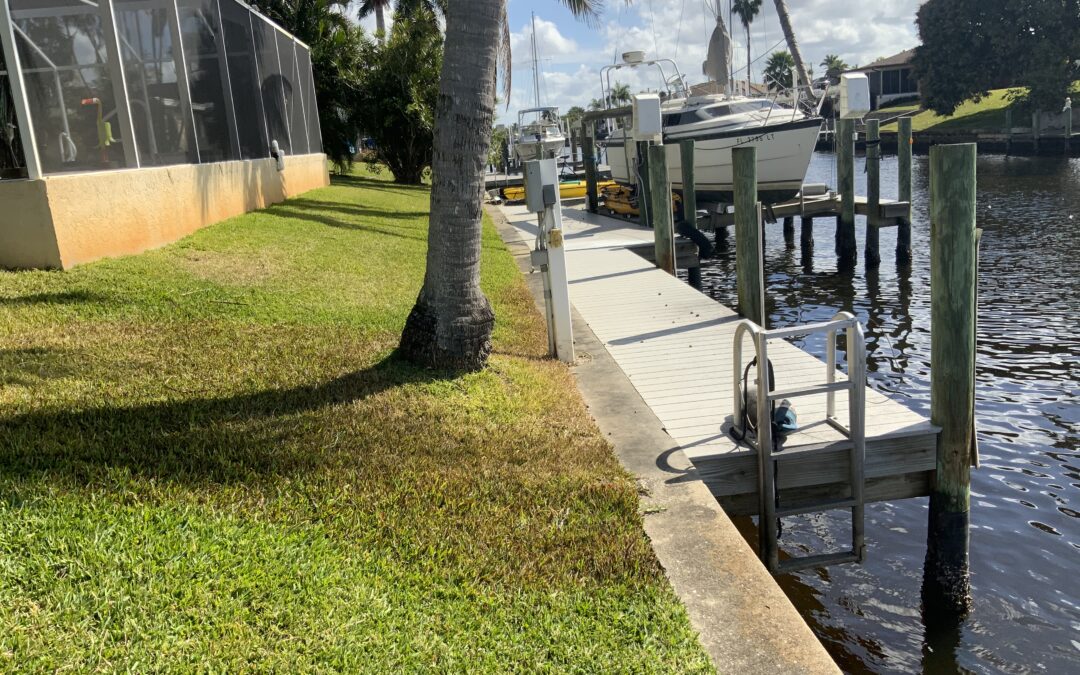Which Option Is Best for Florida Waterfront Properties?
Living on the water in Florida has many perks, but it also means battling the constant wear and tear that tides, storms, and groundwater put on your seawall. Over time, cracks, soil erosion, and leaks can compromise your seawall’s ability to protect your property.
When it comes to repair, homeowners often face a choice between traditional repair methods and modern polyurethane foam injection. At Sealtite Slabjacking & Insulation, we specialize in helping Fort Myers and coastal property owners understand the pros and cons of each option so they can make the best decision for their investment.
Traditional Seawall Repair Methods
Historically, seawall repair involved concrete patching, grout pumping, or even full replacement. While these methods can provide temporary relief, they often come with major drawbacks:
-
Excavation required – Large equipment and digging can disrupt your property and landscape.
-
High cost – Full or partial wall replacement is labor-intensive and expensive.
-
Temporary fixes – Patching cracks or pumping cement-based grout may not fully address underlying soil erosion.
-
Long project timelines – Traditional repairs often require days or weeks of work.
-
Not water-resistant – Cement-based materials can deteriorate in Florida’s wet, sandy soils.
Traditional repairs may still be necessary when a seawall is structurally beyond repair, but for most cases of leaks or soil washout, there are more effective solutions.
Seawall Repair with Polyurethane Foam
Polyurethane foam injection has quickly become the preferred method for seawall repair across Florida because it’s fast, non-invasive, and long-lasting.
How it works:
- Small holes are drilled in the seawall or soil behind it.
- High-density polyurethane foam is injected into voids and cracks.
- The foam expands, displacing water, compacting soil, and sealing leaks.
- Once cured, the foam forms a watertight, durable bond that stabilizes the seawall.
Benefits of Polyurethane Foam vs Traditional Methods
✅ Non-Invasive – No heavy machinery or digging required.
✅ Water-Resistant – Foam is hydrophobic and will not weaken when exposed to water.
✅ Fast Installation – Most projects are completed in hours, not weeks.
✅ Long-Lasting – Foam does not shrink, wash out, or break down in wet soils.
✅ Cost-Effective – Less labor and no large equipment mean lower costs than replacement.
✅ Soil Stabilization – Foam fills voids and compacts sandy soils, addressing the root cause of seawall failure.
Which Repair Method is Best for You?
If your seawall is severely damaged or structurally unstable, replacement may be the only option. But in most cases of leaks, soil loss, or minor cracks, polyurethane foam repair is faster, cleaner, and more affordable—making it the best solution for protecting Florida waterfront properties.
Trust Sealtite Slabjacking & Insulation for Seawall Repair
At Sealtite Slabjacking & Insulation, we specialize in polyurethane foam injection to stop seawall leaks, stabilize soil, and extend the life of your seawall. Serving Fort Myers and surrounding coastal areas, our non-invasive seawall repair solutions protect your property without the disruption of traditional methods.
Protect Your Seawall Today
Don’t wait until minor leaks turn into major structural damage. Let Sealtite Slabjacking & Insulation restore your seawall with proven polyurethane foam technology.
📞 Call us today at 239-770-4080
🌐 Visit www.SealtiteFlorida.com to schedule your free seawall evaluation.

